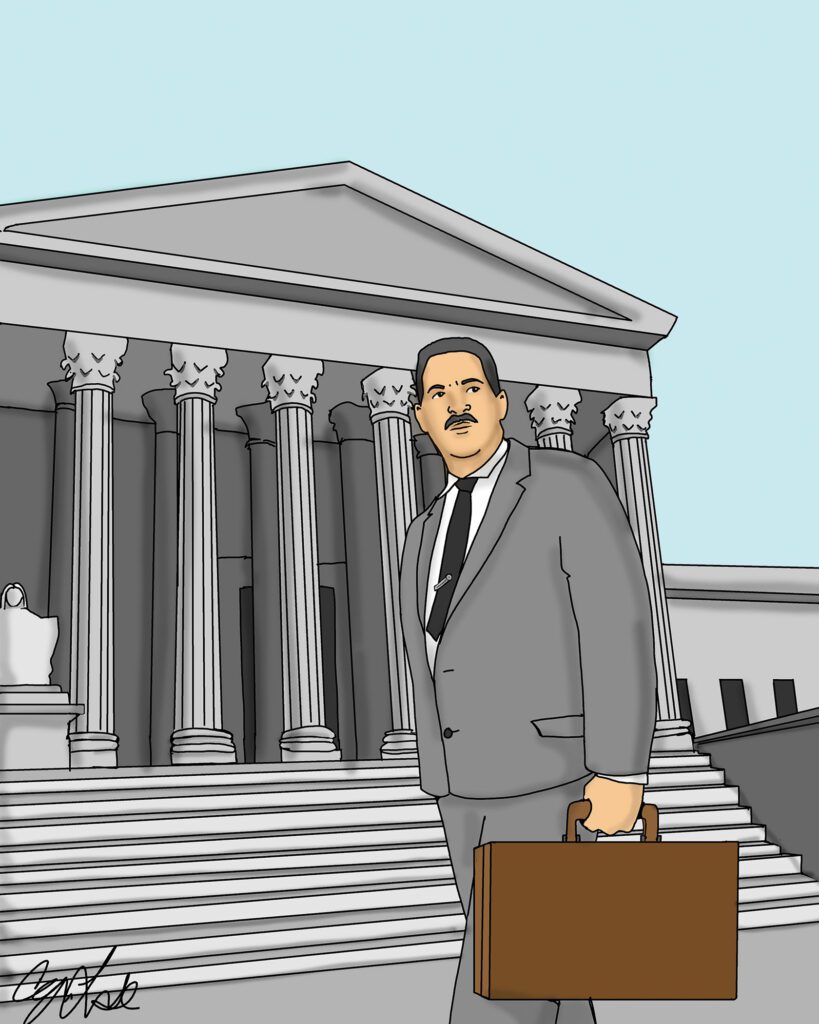
With Jim Crow still intact in America in the early 1950s, Thurgood Marshall and a group of attorneys took the landmark Brown v. Board of Education case to the Supreme Court, whose verdict — issued 70 years ago next week — changed our country for the better. The decision striking down deliberate school segregation opened the door to creating a more equal educational system. The case also helped to bolster later efforts to use affirmative action as a means of increasing diversity in higher education.
Marshall and his team argued before the court that separate is not equal when it comes to education. The evidence was clear in the form of inferior school buildings, supplies and textbooks for Black students, alongside overcrowded classrooms. The psychological damage to African American children through policies of exclusion and bias were also entered as evidence before the justices.
The ruling was broadly greeted as a triumph in the advance of civil rights, but it didn’t take long for a backlash to begin. Some public schools in the South closed rather than integrate. Many parents avoided the impact of the integration order by sending their children to church-run schools or other private institutions that excluded Black pupils. Over time, however, much of the segregation did subside, and additional money in many cases was put into schools that were predominantly filled by students of color.
The Brown decision set the stage for other challenges to Jim Crow during the crest of the Civil Rights Movement. Barriers to fair housing, equal employment, voting rights, and public accommodations were struck down in courts and Congress.
But as we look now across the landscape of our country, it is clear that forces of intolerance and regression are working to turn back the clock of progress. One of the most damaging was the Supreme Court’s decision last year to strike down affirmative action.
The broad assault on affirmative action threatens opportunities in education as well as more equitable access to employment and to contracts for minority entrepreneurs. But the removal of affirmative action is the most pernicious when it comes to education, because education is the most powerful tool to lift up our community.
There is still a tremendous racial divide between how many students of color graduate from high school, go to college and earn degrees. People of color tend to attend elementary and high schools that do not provide the same quality of education as schools in predominantly white suburban communities.
Massachusetts is a state that prides itself on education and has provided generous support for everything from early childhood education to public research universities, but it is clear that this commitment does not exist in many other parts of the country.
As a son of two educators, I watched my parents work tirelessly to teach students in their classrooms. But even in Cambridge, one of New England’s most liberal communities — and one known for its institutions of higher learning — there are public schools still not providing resources equal to those available in other systems, particularly private schools, whose students have a decided advantage when applying to top colleges and universities.
The long-term impact of the Supreme Court decision on higher education admissions can be clearly predicted from what has happened in states that have retreated from affirmative action in their own systems. In every case, the consequences of striking down efforts to promote racial diversity on their campuses have resulted in a whitening of those institutions.
According to the Economic Policy Institute, a total of nine states have implemented bans on affirmative action in higher education, among them California and Michigan. Flagship public universities in these states responded by investing hundreds of millions of dollars in outreach programs to counteract the drop in minority enrollment. But the institute reports that these approaches have proved ineffective — and they said so in briefs filed last year with the Supreme Court as the justices were weighing the challenge to affirmative action. “Both university systems revealed perpetually low enrollment rates among students of color despite their significant investment in alternative ways to boost diversity among the applicant pool and student body,” said the EPI report.
While switching to race-blind admissions with preferences based on socioeconomic status rather than ethnicity was seen as a hopeful fix, that hasn’t produced significant diversity gains either.
It is clearly more difficult for students from disadvantaged backgrounds to compete for seats in highly selective institutions with students from private schools and wealthier communities. For over 40 years, affirmative action served to create more balanced opportunities for those students, who, despite their best efforts, still found themselves lagging behind.
It’s easy to say that we are multiple generations past slavery and the damage caused by centuries of oppression and bias, but that legacy is still clearly stamped in a society where opportunities to build generational wealth — as just one example — were denied by discriminatory housing and lending policies.
The same court that struck down affirmative action in higher-education admissions also struck down reproductive rights in overturning Roe v. Wade. These decisions were a one-two punch against fairness and individual rights and don’t bode well for a future built on equitable opportunity and bodily autonomy.
As we mark the anniversary of Brown v. Board of Education, it’s time to stand up and push back to ensure that the systems created to correct the imbalances of the past are not dismantled before they achieve their goal. Black Americans have always cherished education, in some cases learning to read and write in spite of laws forbidding such instruction. The Brown decision 70 years ago was not the end of discrimination — it was the start of a long and unfinished process to reverse the impact of systemic bias. Seven decades removed from Thurgood Marshall’s arguments on behalf of the plaintiffs, we are still a long way from achieving that goal and making up for the damage. Striking down affirmative action in higher education makes that process all the more difficult. While seeking new strategies to boost diversity in higher education, we must also strengthen our public schools to ensure that our children can gain access to the nation’s best colleges and universities.





Leave a Reply
You must be logged in to post a comment.